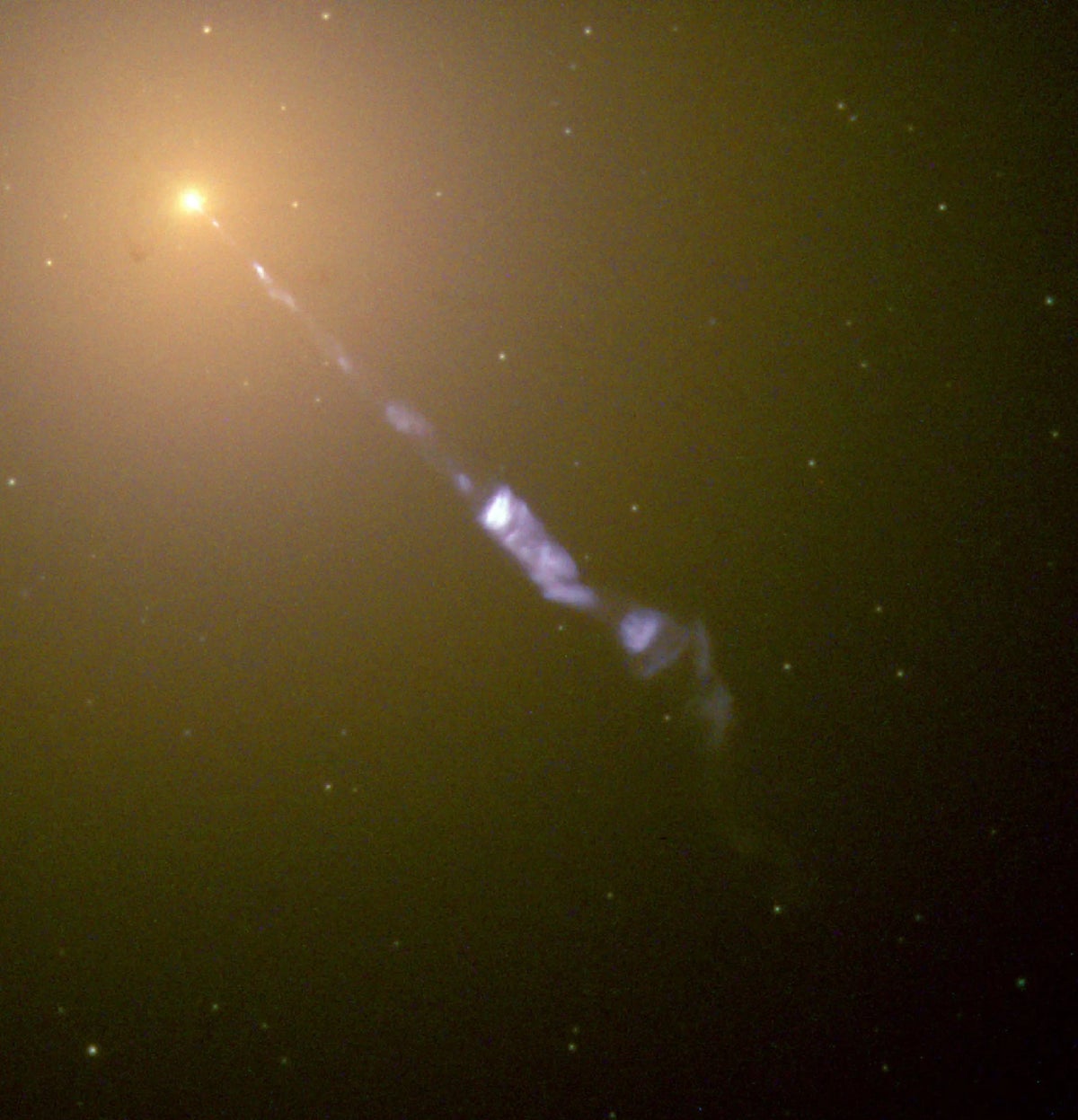**Summary: When a Galaxy Erupts, What We See Depends on Our Perspective**
Astronomers have long marveled at the spectacular and sometimes violent phenomena occurring at the centers of galaxies. While our own Milky Way appears relatively calm, with only occasional cosmic fireworks like supernovae or the gentle birth of new stars from colliding clouds of gas, not all galaxies are so tranquil. Across the universe, certain galaxies shine with extraordinary brilliance and unpredictable energy, their centers blazing with light that outshines all the stars in their surrounding galactic neighborhoods. The key to understanding these cosmic powerhouses lies not only in their inner workings but also in how we happen to view them from Earth.
**Active Galactic Nuclei: The Strange Hearts of Galaxies**
One of the most striking examples of a galaxy with an active, energetic core is Centaurus A, located about 13 million light-years away. At first glance, Centaurus A seems like a typical elliptical galaxy, with a smooth, rounded appearance. But it’s bisected by a dark lane of dust, hinting at unusual activity. In the 1940s, astronomers discovered that Centaurus A was emitting strong radio waves from its center, an unexpected finding at the time. Over the subsequent decades, further observations revealed emissions of high-energy x-rays and even gamma rays from its core. Clearly, Centaurus A was no ordinary galaxy.
As more such energetic galaxies were discovered, they were grouped into a category called Seyfert galaxies, named after astronomer Carl Seyfert. But soon, astronomers encountered even stranger objects. In the 1960s, they found sources that blasted out radio waves but were extremely faint in visible light. Some of these objects, when analyzed, were found to be at staggering distances from Earth, meaning they were incredibly bright—so bright that their light outshone entire galaxies. Since these sources appeared point-like, similar to stars, they were dubbed "quasi-stellar radio sources," or quasars for short.
Quasars were found to be the brilliant, energetic hearts of distant galaxies, but their intense light made it difficult to see the galaxies themselves. As astronomers tried to make sense of these discoveries, they found yet another mysterious class of galactic cores: blazars. The prototype, BL Lacertae (BL Lac), is nearly a billion light-years away and demonstrates wild changes in brightness over short periods—sometimes just hours. Blazars, Seyfert galaxies, and quasars all share the hallmark of having most of their light pouring from their centers, and together, they fall under the broader category of "active galactic nuclei" or AGN.
**The Power Source: Supermassive Black Holes**
It didn’t take long for astronomers to identify the engine behind these cosmic beacons: supermassive black holes. These giants, with masses millions or even billions of times that of our sun, lurk at the centers of galaxies. When material—gas, dust, or even entire stars—falls toward a black hole, it doesn’t simply disappear. Instead, it forms a swirling, flattened accretion disk around the black hole. The disk can extend for trillions of kilometers, and as matter spirals inward, it is heated to millions of degrees by friction and gravitational forces, emitting prodigious amounts of light across the electromagnetic spectrum.
But the accretion disk is only part of the story. The swirling material generates powerful magnetic fields, which can become twisted and amplified by the rapid motion near the black hole. Under certain conditions, this combination of intense magnetic fields and the effects of the black hole’s spin (which can literally drag spacetime around with it) can launch twin jets of energetic particles perpendicular to the disk. These jets are among the most powerful phenomena in the universe, sometimes stretching hundreds of thousands of light-years into intergalactic space. The jets can emit light from radio waves to gamma rays, depending on their energy.
Further from the core, encircling the accretion disk and jets, lies a doughnut-shaped ring of dust called the "dust torus." This torus can be dozens to hundreds of light-years across, and is packed with microscopic grains of rock and carbon. The dust is so thick that it can block visible light and even some higher-energy radiation, depending on the observer's line of sight.
**A Matter of Perspective: The Unified Model of AGN**
With

